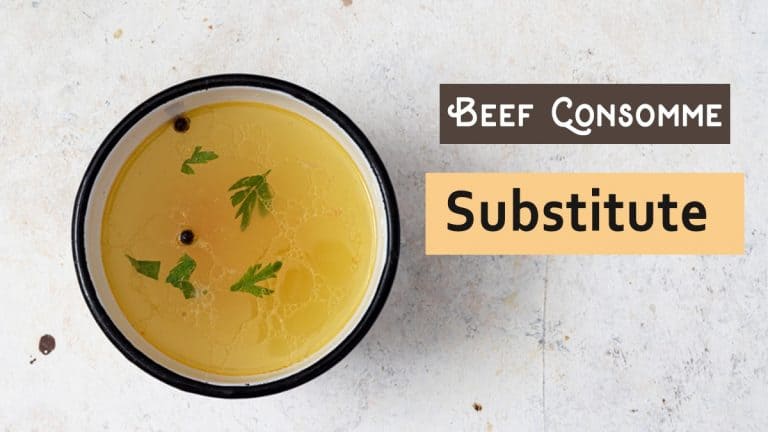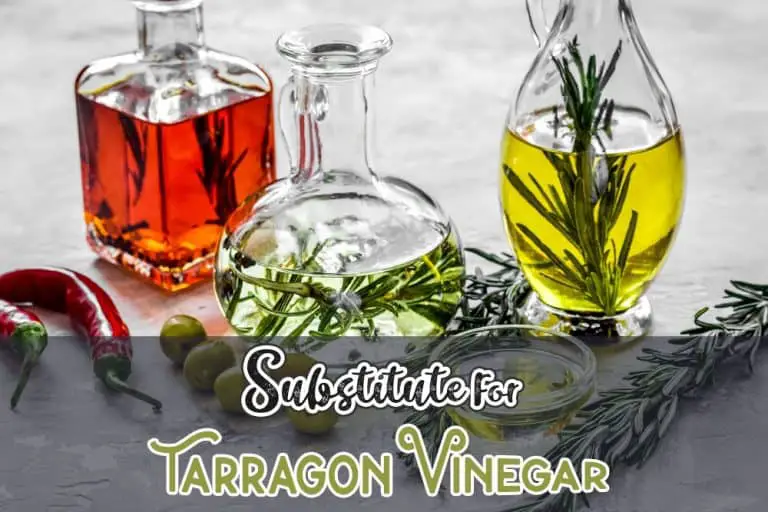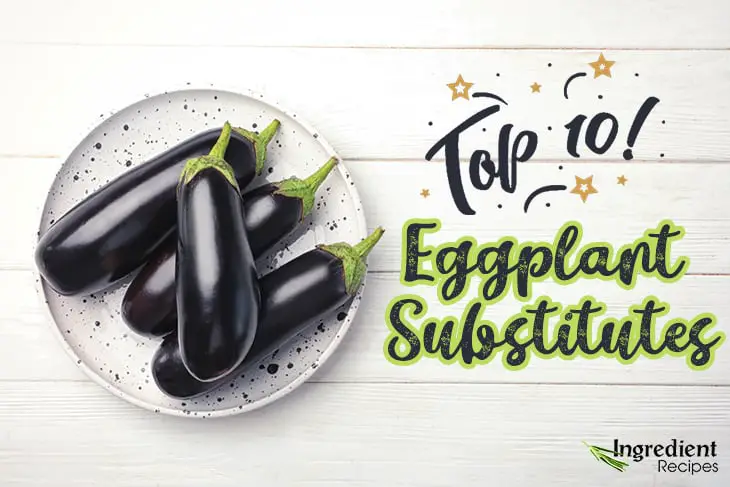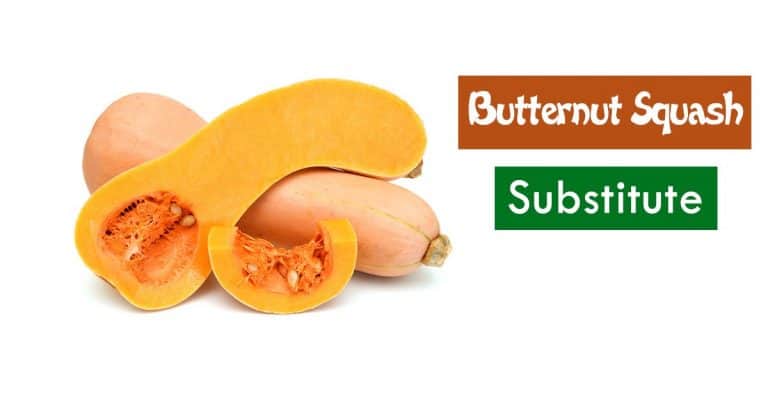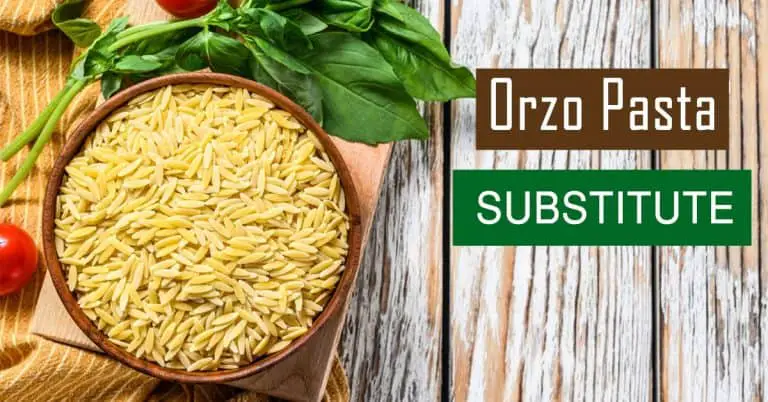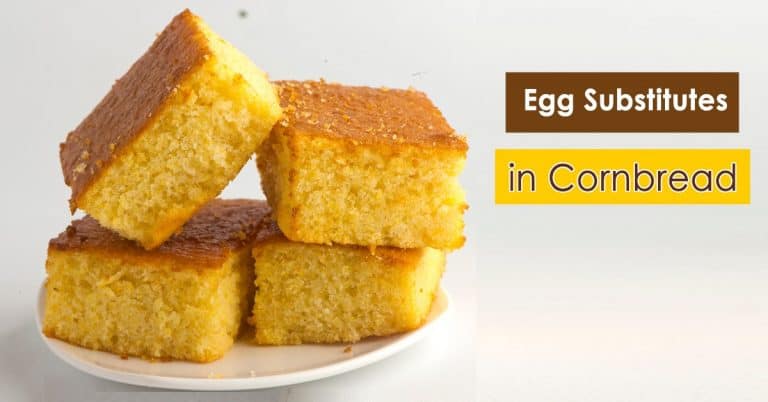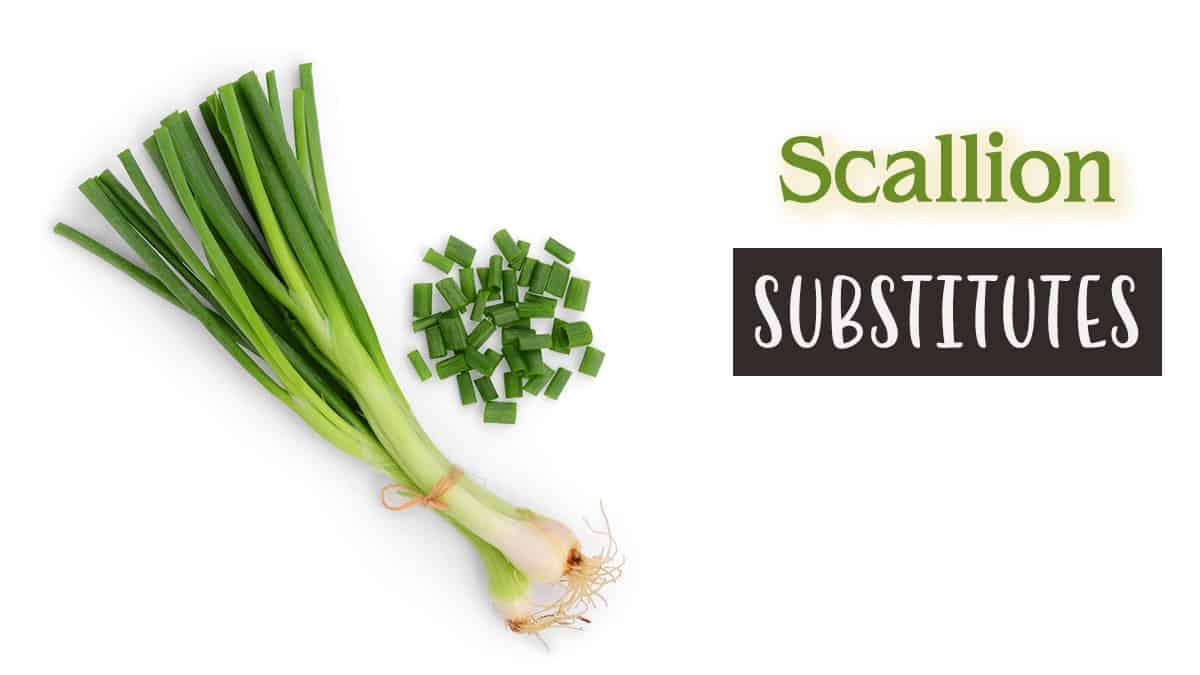
Scallions stand among the Allium family – including onions, garlic, leeks, shallots… – all of which can be considered scallion substitutes. This savory grows in clumps and develops dark green with hollow-tube leaves.
Sometimes, the term “scallion” can confuse you when it comes to different types of onions. However, the scallions we discuss have a white bottom part and appear in a straight form instead of a round shape.
7 Best Scallion Substitutes In Your Kitchen
Disclaimer: These scallion substitute veggies may have either a milder or stronger flavor than our true scallion. Make sure that you replace it a little by little until you reach the right amount.
1. The White Part Of Leeks
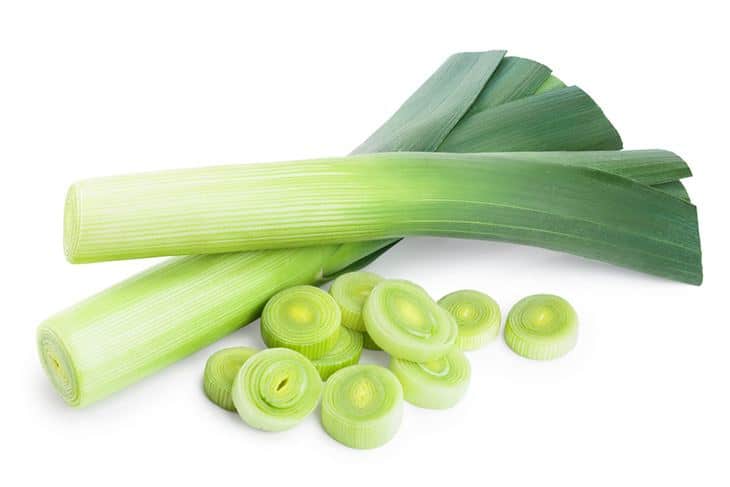
This part of the leek bears a significant resemblance to scallions, with a milder taste and savory flavor. Leeks are crunchy and firm when they are fresh, and people often love the white part more than the rest.
Like scallions, you can use leeks to make soup, fried noodles, and pasta. From my perspective, soup with leeks is always worth giving a shot because you’ll notice a major difference in its flavor.
Yet, don’t forget that leeks are well-known for being attached to dirt after being harvested. Thus, you should rinse every single one of them; otherwise, your meal quality, as well as your health, may be at stake.
2. Chives

Fresh chives are an alternative recommended by many famous chefs. These mild-flavored vegetables look pretty similar to scallions. Also, note that they are associated with a slight taste of garlic.
To tell chives from scallions, take their size and color into consideration. Chives are usually smaller and have a deeper green color (when ripe and ready to use). Besides, they tend to wither quicker than scallions.
With a mild and complementary flavor, chives can be an excellent alternative to scallions in the following cases:
- Making sauces: Chives are often paired with seafood or tucked into creamy cheese to be smeared on bagels in the United States. They also play an essential role in the gräddfil sauce that adorns Sweden’s traditional festive herring dish. In Poland, Russia, and Germany, they are served with quark or tvorog cheese. Sometimes, chives are combined with soy sauce to make the best dipping sauce for fried tofu in Vietnam.
- Decorating dishes: Chives are usually added to plates as a garnish. They appear in an eye-catching color and can withstand prolonged cooking durations or high heat without changing the flavor.
- Seasoning: Chives are sometimes combined with tarragon, parsley, and chervil to make the classic French spice fines herbes; or being used alone to garnish meals such as omelets, fish, and salads.
3. Yellow or Sweet Onions
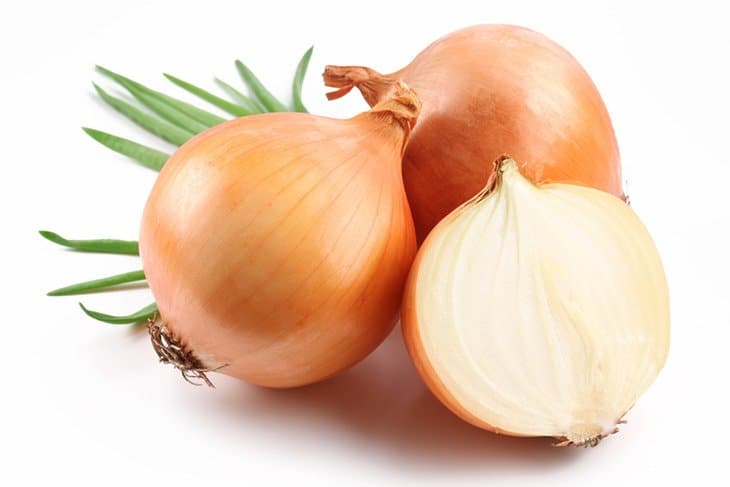
Because yellow or sweet onions are a common vegetable, most people take them for granted. However, many meal recipes include this type of vegetable because of its potential for enhancing the flavor of soups and roasted dishes.
Yellow onion, sliced thin and cooked correctly, can substitute for scallions in various ways and recipes, such as omelets and soups. The result is quite satisfying even though the yellow onions require different cutting and cooking techniques than scallions.
In most cases, your yellow or sweet onions should be lightly cooked before you substitute them for scallions. If you want a less spicy meal, reduce yellow onions because they produce a much more potent flavor than scallions.
If you don’t have any fresh onions, use the onion powder instead. Then, add a few coffee spoons to your scallion-based soup, stews, sauces, and dips. Meanwhile, bear in mind that you may not achieve the same fresh, herbaceous flavor as when using fresh ingredients.
4. Spring Onions
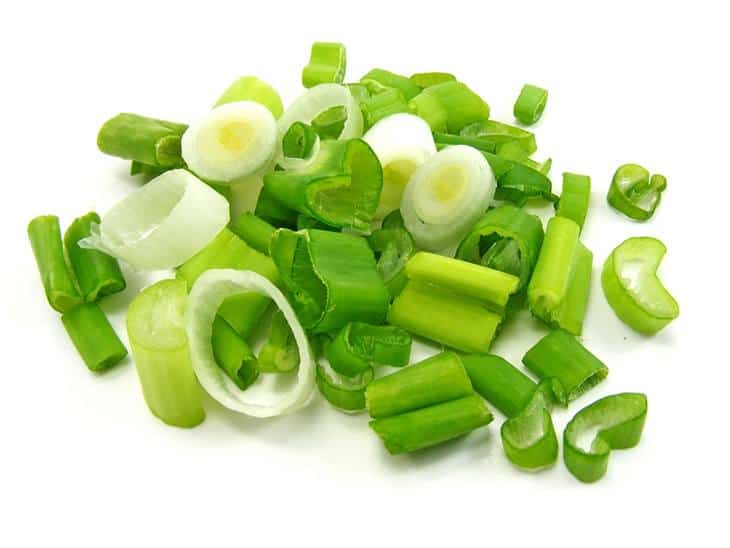
Spring onions are regular onions but harvested way before the moment they become mature enough. Here are some main differences between spring onions and scallions:
- Spring onions usually have white bulbs, and they are primarily available during the spring and summer.
- Spring onions, as opposed to mature onions, should be kept refrigerated.
- Although fresh spring onions produce a more piquant bite than scallions, they taste better when sliced and sautéed.
- Spring onions can be whole-roasted and used for frittatas, soups, and ragouts.
- Stir-fry recipes benefit greatly from spring onions (both the white and green stems).
Their bulbs are often sweet and crunchy that people love to eat them fresh. Meanwhile, please note that the green stems of spring onions have a harsh and pungent flavor, so you should use a less amount of them than expected.
5. Shallots
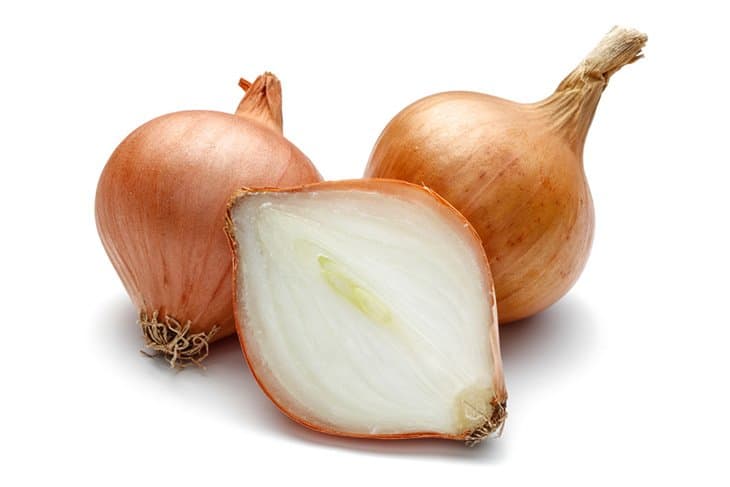
Shallots are one member of the allium family, looking like tiny yellow onions, with a deep golden brown/reddish papery outer layer. They are typically spherical and bulbous, with two lobes joined by the base.
Their size can vary: Some can grow big, and some are just small. Smaller ones are typically younger and softer in flavor.
Shallots provide a high nutrition value, including fiber, vitamins, minerals, and antioxidants. Specifically, the flavonoid component in shallots acts as an antioxidant that boosts your immune system and protects you from cancer, heart diseases, and diabetes.
This delicate and tender vegetable is associated with a rich taste and garlic overtones. Therefore, use a reasonable amount, or you may ruin your dish quality.
If used wisely, it should provide an enjoyable and distinct flavor, as well as a tinge of garlic. Roast them until they are caramelized, and you’ll be attracted to their pleasant aromas right away.
6. Ramps
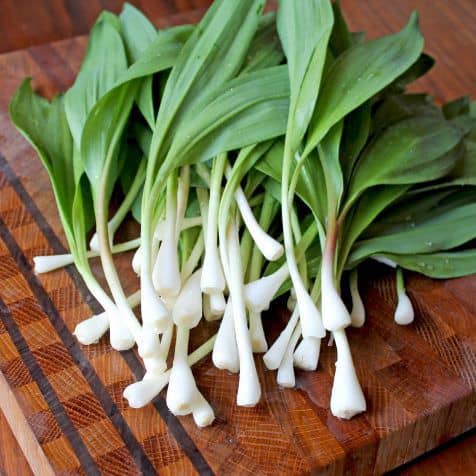
Ramps are regarded as spring, wild leeks that often appear after a winter of tubers and citrus. They have a similar flavor to garlicky leeks or scallions.
This type of veggie thrives in shaded and woody areas, acting as an ideal substitute for scallions. It also has garlic overtones and peppery aromas.
Ramps are smaller when compared to scallions. They have a more robust flavor than onions and should not be overused. Although you can eat or use ramps without processing with heat, consider boiling for a few minutes to make them softer and tastier.
There is only one disadvantage of ramps: They are not easy to find and buy. Hence, you should feel lucky if they appear in your kitchen storage.
Unlike leeks, you can use ramps regarding both their white bottom part and leaves. When cooking your meals with ramps, feel free to roast, grill, sauté, or serve them raw in salads and pesto. Likewise, they can become an essential part of risottos, rice dishes, sauces, pasta, potato dishes, eggs, and crostini.
7. Garlic Scapes
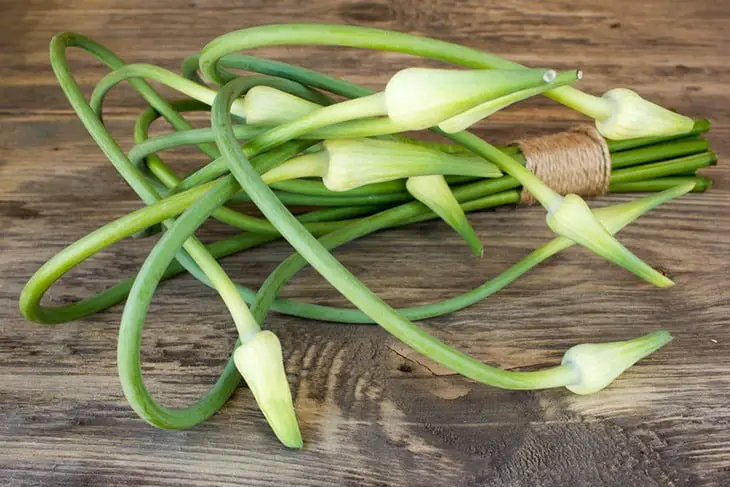
Garlic scapes are not a plant. Instead, they are known as the tender stem and flower bud of a stiff neck garlic plant.
Hardneck garlic is the type of garlic that grows in Canada and the northeastern United States. Garlic scapes emerge directly from the garlic bulb, then coil. They look like long, curly green beans when harvested.
Raw garlic scapes may be as crunchy as green beans or asparagus, which can be eaten raw or cooked – it’s up to you.
When it comes to processing garlic scapes, simply remove the stringy tip of them. Then, cut the scape crosswise into the shape of little coins or string bean-like stalks.
You should find no difficulties cooking your garlic scapes; just replicate the same method when dealing with regular garlic or onions.
The reason why garlic scapes can act as a scallion substitute is that they have flower buds tasting like onions. Use them to make your sauce, bake some cakes; or grill them to add more spice to your main dishes.
Frequently Asked Questions
What Do Scallions Usually Taste Like?
Scallions have two main parts: the white bottoms and the green shoots, resulting in 2 different flavors depending on how you use and cook them.
The flavor of the base white portion is almost similar to a white onion, although it is less intense and tends to be sweeter. While some may think it doesn’t taste good, this white bottom part is mild enough for most people, even when given raw as a garnish or component in a salad.
On the other hand, the green hollow-tube leaves have an oniony taste with a fresh, grassy undertone.
Here is some common way people use scallion in the kitchen:
- Making the sauce: Shallots can be pureed in a vinaigrette or with wine, garlic, or tomato puree for a pasta sauce. To prepare a pungent relish for cooked meats, combine chopped scallions with ginger, vinegar, soy sauce, and oil. Here is some tomato puree substitute recipe in case you need them.
- Grilling: After only a few minutes on the grill, scallions become sweet and smooth. Serve whole in a salad with tomatoes or quinoa, tacos, or oysters with fried onions and peanuts.
- Adding to noodles: Cut scallions crosswise into small pieces to stir-fry with noodle dishes. It brings tasteful aromas to make the noodle plate look more attractive.
- Used for baked products: To serve alongside stewy meals like chili, add onions to cheddar muffins, bacon biscuits, or cornbread.
- Enhancing the overall taste: Fry the scallions until crisp, then combine them with the seasonings or Greek yogurt. Or, grill them for guacamole.
- Making sandwiches: Scallions go well with smoked salmon tea sandwiches and maybe even grilled cheese.
- Making the salad: Thinly slice scallions lengthwise to create feathery strips for tossing with herbs and dressing.
If you desire to know more about scallions, refer to this article from The Spruce Eats.
Should I Substitute Red Onions For Scallions?
Every other type of onions can do a great job, like scallions. Make sure that you calculate the correct amount of red onions so that your meal won’t become a nightmare.
Green Onions And The Scallions Are The Same Stuff?
Yes! They’re essentially the same because the bulb of spring onions is much longer and a little different. Most scallions do not produce true bulbs. But anyway, they can also be used interchangeably.
Can You Eat The Whole Scallion?
Yes, you can (except for the roots). Both the green and white parts of the plant can be consumed. The green part is used as a garnish and has a mild flavor. Meanwhile, the white part has a sharper flavor and tastes more like onions when cooked.
Conclusion
Our meals won’t be as juicy and fresh if we don’t include vegetables. No dish is complete unless it contains at least one vegetable garnish on the side. Hopefully, with that scallion substitute we mentioned above, you will always have a nice meal.

